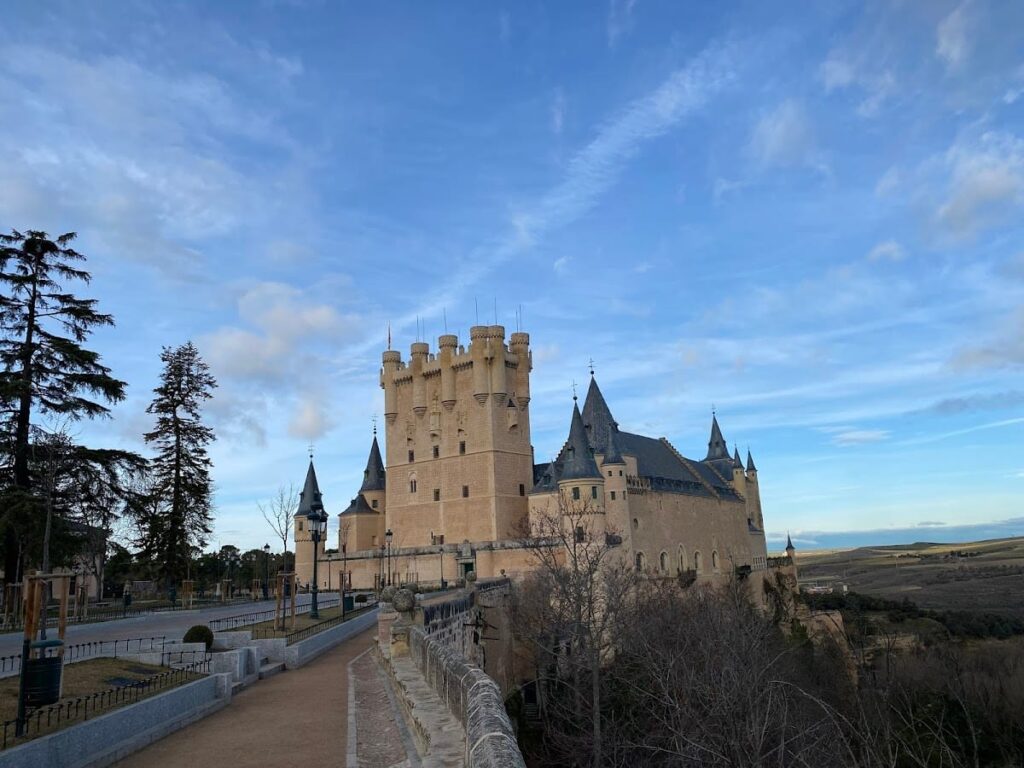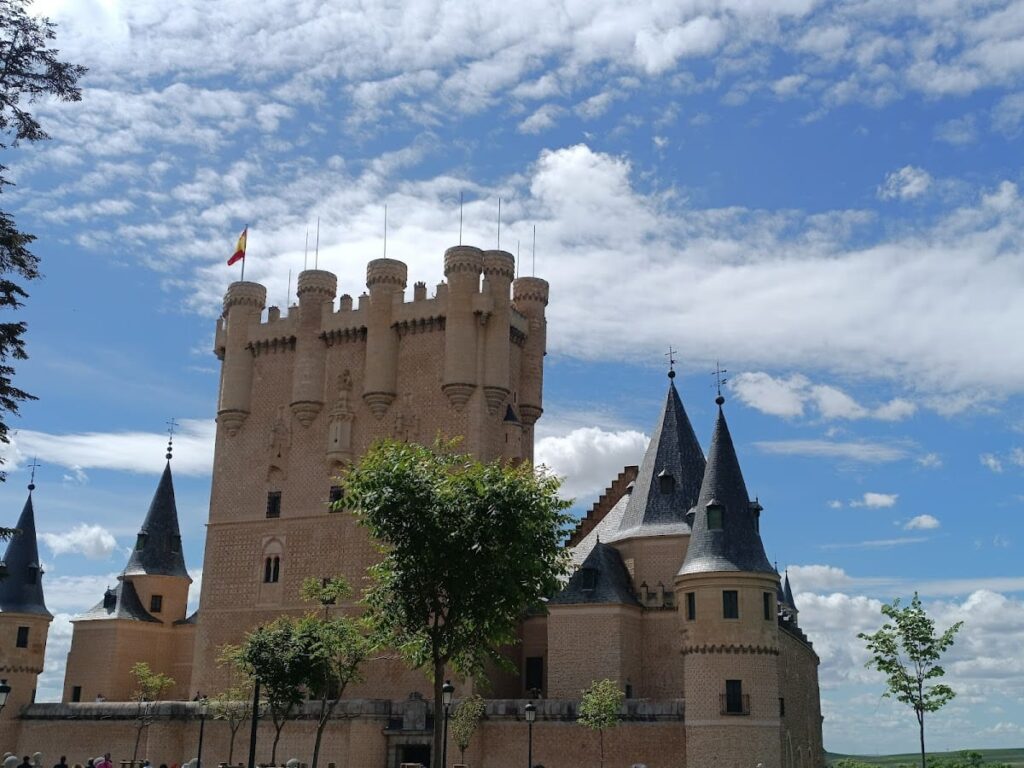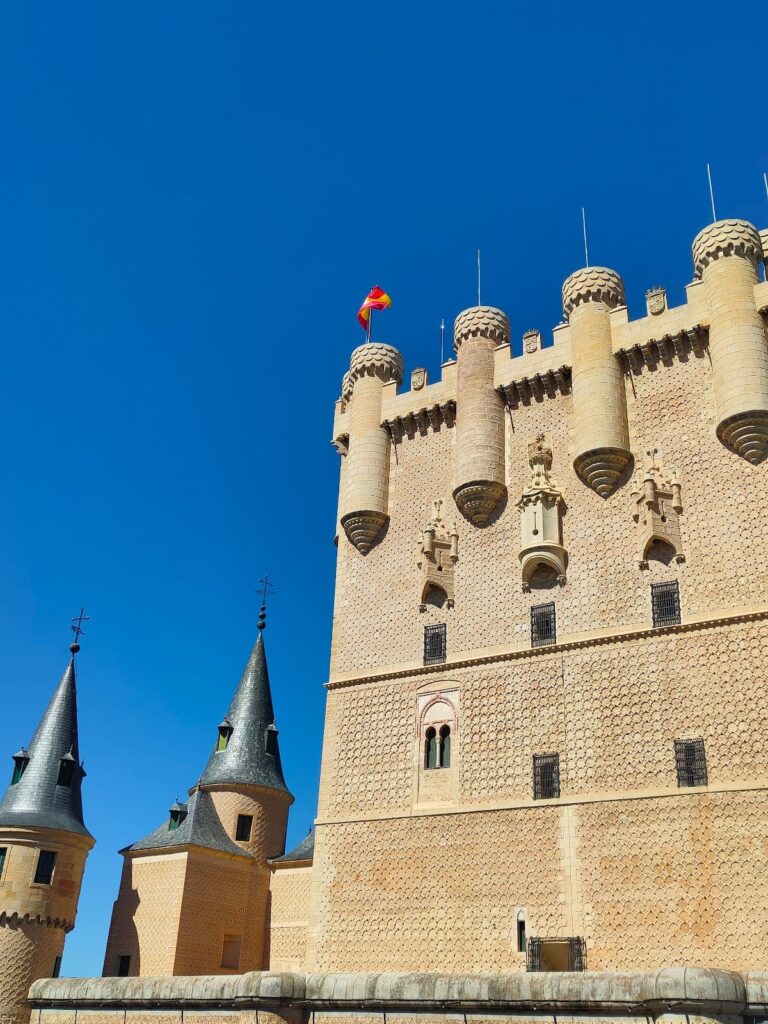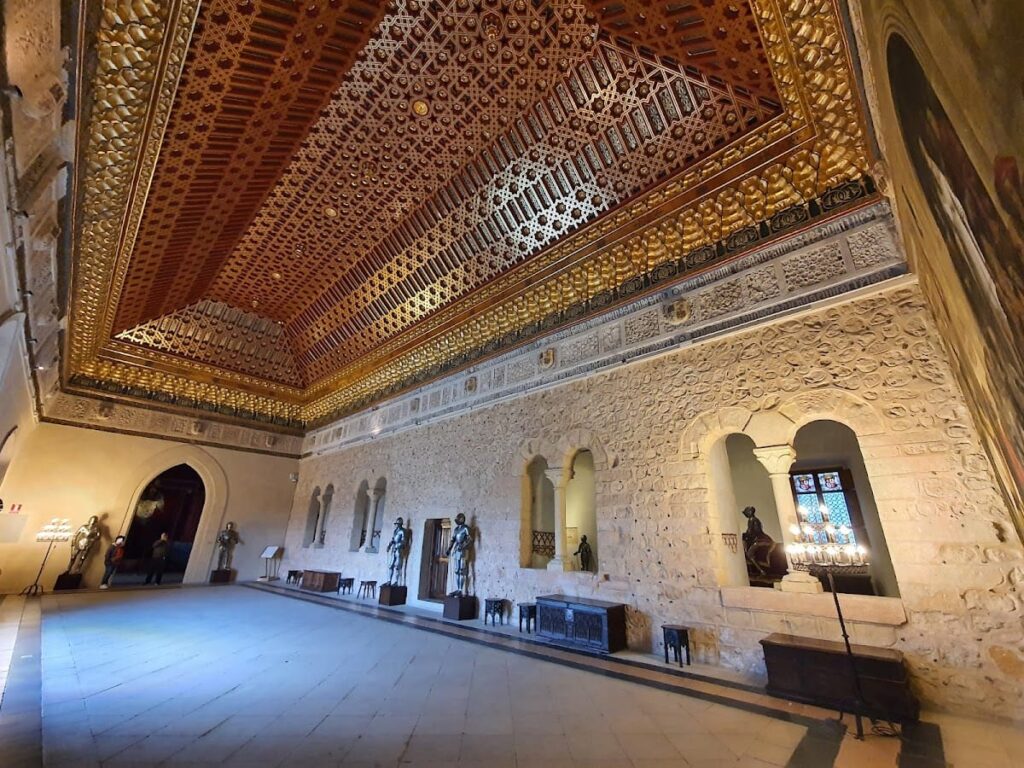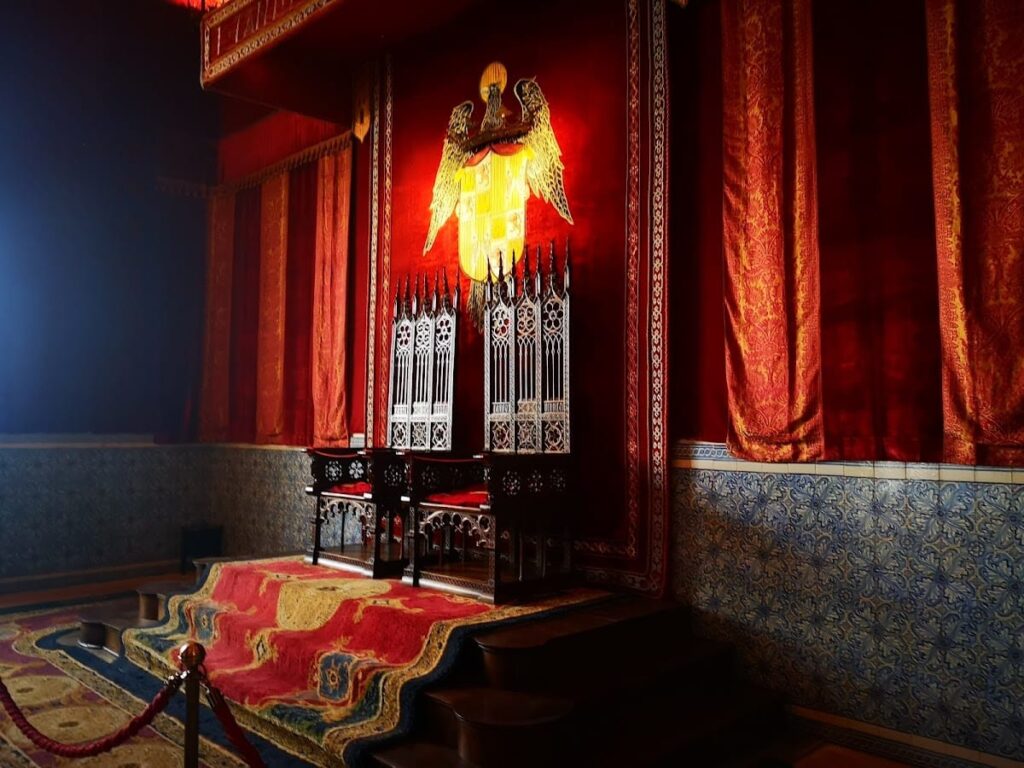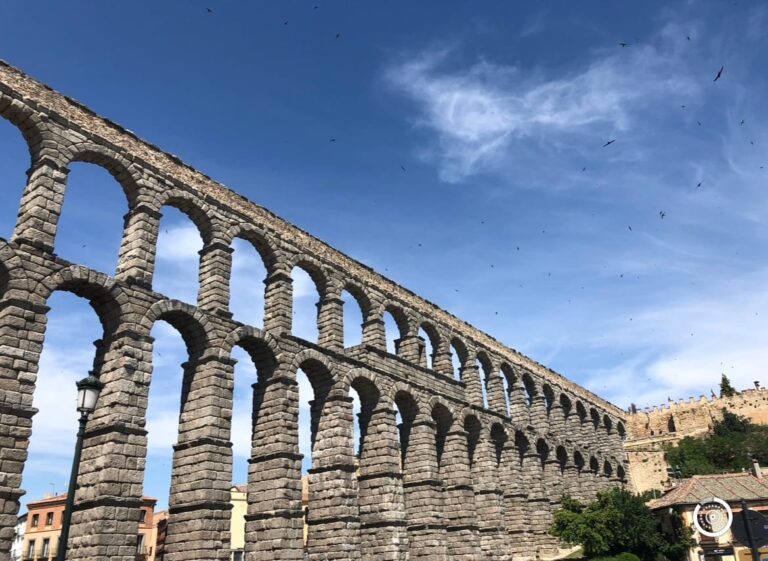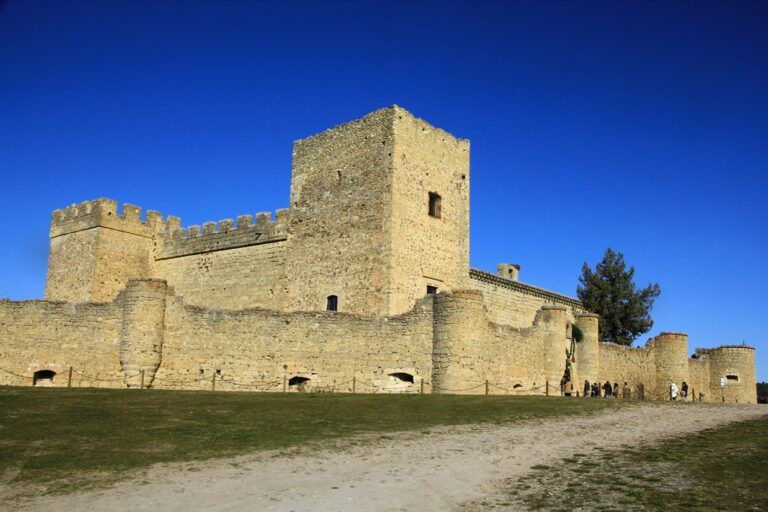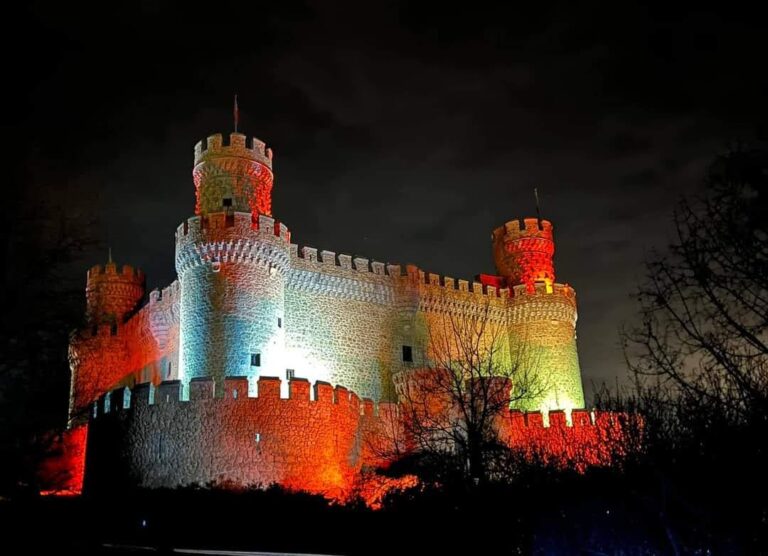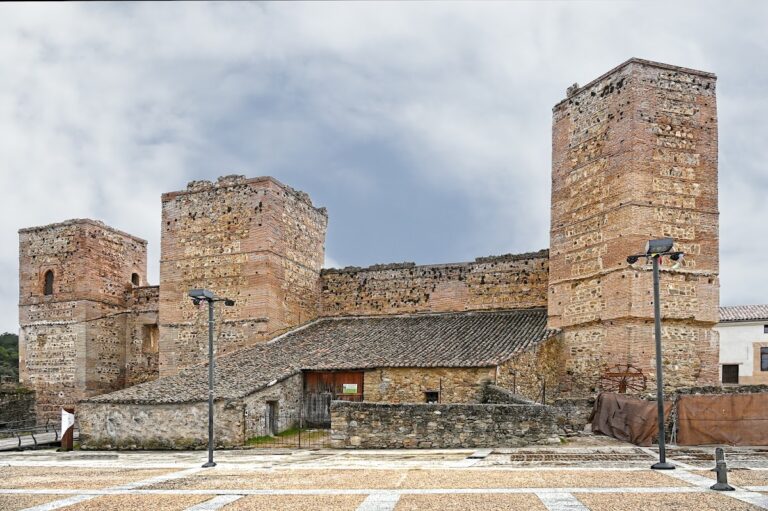Alcázar of Segovia: A Historic Royal Fortress and Military Site in Spain
Visitor Information
Google Rating: 4.7
Popularity: Very High
Google Maps: View on Google Maps
Official Website: www.alcazardesegovia.com
Country: Spain
Civilization: Medieval Islamic
Remains: Military
History
The Alcázar of Segovia stands on a rocky hill overlooking the Eresma valley in Segovia, Spain. Its origins trace back to Roman times, built upon the foundations of an earlier Roman military camp known as a castrum. The first written record of the fortress dates to 1125, shortly after King Alfonso VI reclaimed Segovia during the Christian Reconquest. Initially serving as a fortress, it soon became the primary royal residence of Castilian monarchs by at least 1135, earning the title “Palacio Mayor.”
During the Middle Ages, the Alcázar evolved from a military stronghold into a royal palace and administrative center. It housed the treasury, royal archives, and armory, reflecting its growing institutional importance. Twenty-two monarchs lived within its walls, and it hosted significant events such as royal weddings and political gatherings. The Homage Tower safeguarded the Crown of Castile’s treasure, which notably financed Christopher Columbus’s first voyage. In 1437, the castle became home to one of Castile’s earliest royal archives, a precursor to the General Archive of Simancas.
The Alcázar was especially favored by the Trastámara dynasty between 1369 and 1516. It hosted the first Cortes, or parliamentary assembly, in 1256 and remained a royal court seat until the reign of the Catholic Monarchs. Over time, the fortress transitioned into a palace focused on protecting the royal treasury, archives, and armory rather than purely military defense.
Under the House of Austria from 1516 to 1621, the Alcázar saw less frequent royal use but remained significant during key events. It played a role in the War of the Communities (1520–21) and was the site of the 1570 wedding between Philip II and Anna of Austria. After this period, its function shifted toward military and penal uses.
From the 17th century onward, the Alcázar served as a state prison for prominent detainees. This role continued into the 20th century, including the incarceration of General Berenguer during the Second Spanish Republic in 1931. In 1762, King Charles III established the Royal College of Artillery within the Alcázar, which opened two years later. This institution became a leading military academy, adding a chemistry laboratory in 1792 under the direction of chemist Louis Proust.
A devastating fire in 1862 destroyed the ceilings of the noble halls. These were later carefully reconstructed using detailed engravings from 1839 by José María Avrial. Since 1898, the Alcázar has housed the General Military Archive, the oldest archive of the Spanish Armed Forces. It was officially declared a historic monument in 1931.
In 1951, the Patronato del Alcázar was created to oversee the site’s preservation and public access. This organization maintains the castle’s unique identity as a royal palace, military site, and artillery college. The Alcázar’s distinctive silhouette inspired Walt Disney’s design for the Snow White castle in 1937. It has also appeared in films and television series, including Orson Welles’s 1965 film *Campanadas a medianoche* and Amazon Prime’s *The Wheel of Time* in 2020.
Remains
The Alcázar of Segovia features an irregular layout adapted to the rocky hill on which it stands. Its construction combines Gothic, Mudéjar (a style blending Christian and Islamic artistic elements), and Renaissance influences. The exterior includes a Herrerian-style courtyard, a dry defensive moat about 26 meters deep, and a stone bridge replacing the original drawbridge.
The most prominent structure is the Tower of John II, built between 1440 and 1465. This square Gothic keep rises approximately 80 meters and has five turrets. Inside, a spiral staircase with 152 steps leads to panoramic views of Segovia and its surroundings. The tower incorporates a 13th-century Mudéjar window influenced by Almohad design and is decorated with circular esgrafiado motifs and crenellations bearing Castilian coats of arms.
The castle’s façade features 14th-century esgrafiado decoration, a technique where black dots made from smithy slag protect the lime plaster from moisture. This method is unique to Segovia and may be the origin of the phrase “esto no es moco de pavo,” meaning “this is not trivial.”
Inside, the Alcázar contains a chapel and several noble rooms richly decorated with Mudéjar plasterwork, frescoes, and stained glass windows by Carlos Muñoz de Pablos. These windows depict Castilian monarchs and historical scenes. The Hall of the Galley, commissioned in 1412 by Queen Catherine of Lancaster, is named for its inverted ship-hull-shaped ceiling and features a Mudéjar frieze with inscriptions and stained glass portraits of Henry II and Henry III of Castile.
The Throne Room holds 16th-century Flemish tapestries, portraits of Philip II and Philip III, and original Mudéjar door decorations. Its furniture also dates from the 16th century. The Hall of the Kings, built under Alfonso X and remodeled by Henry IV, displays images of seated Castilian and Leonese rulers, symbolizing royal authority. Its decoration draws inspiration from the Alhambra’s Sala de los Reyes.
The Armory occupies the ground floor of the Tower of Homage, featuring a pointed barrel vault and twin windows. It houses an extensive collection of armor, weapons, and banners, including a richly decorated crossbow attributed to Charles V. The treasure chamber, once the royal treasury, is accessed through a small door with a delicate Romanesque grille taken from the nearby Torre de Hércules.
The defensive moat surrounding the castle is natural in origin but was deepened over centuries. Unfinished granite blocks remain visible at its base. The moat was expanded under Henry IV and Philip II and historically served to hold bears and quarry stone.
The Huerta del Rey, a historic garden area between the castle’s rock base and the Eresma River, is considered Spain’s first romantic garden. Although closed to the public today, it remains preserved as part of Segovia’s landscape.
The castle’s layout also includes the Herrerian courtyard, a chapel, multiple noble halls, and the Galería or Terrace of the Moors. This walled terrace along the façade was once guarded by Moorish sentinels during Henry IV’s reign. The extensive use of granite and slate roofing, added by Philip II, gives the Alcázar a distinctive European castle appearance uncommon in the Iberian Peninsula.
